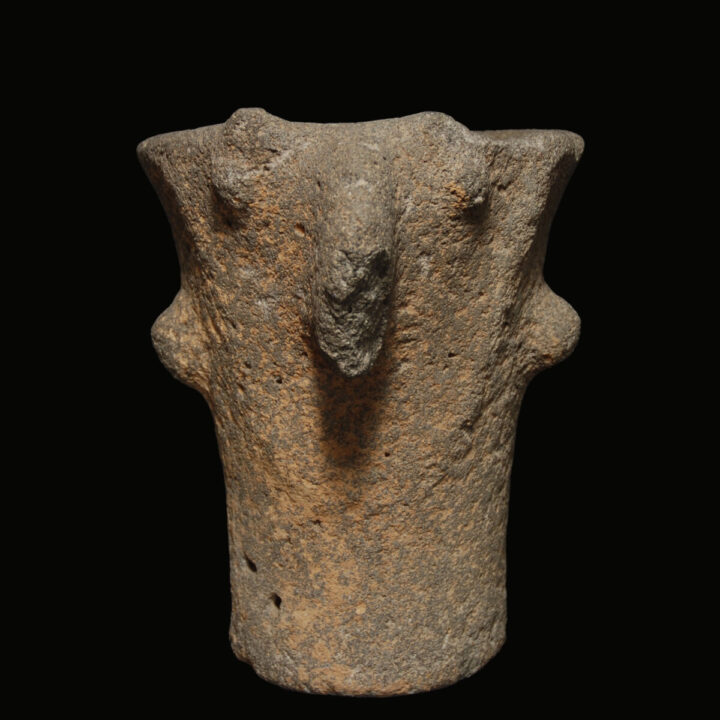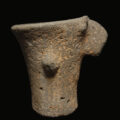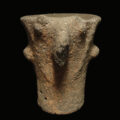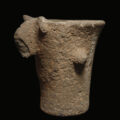Chalcolithic Basalt Altar from the Golan Heights
Culture: Levant
Period: 4th millennium B.C.
Material: Basalt
Dimensions: 30.2 cm high
Price: 18 000 Euro
Ref: 6509
Provenance: Auctioned with Christie's New York on 18 December 1998, lot 254. Thence acquired by the Belgian collection M. Schoulmers. Until 2022 in a family estate. Last in the English art market.
Condition: Ancient wear on the rim and on the nose, but overall, very beautifully preserved.
Description: Columnar statue of local basalt from the Golan Heights, which served as a house deity and altar during the Chalcolithic period. The face of the deity with a large, far protruding nose, symbolizing the breath of life. On the sides bulging large eyes, which protrude over the rim. The face is framed by a slight rib, which is to be interpreted as a beard. Right and left thereof round protruding ears, which once served as handles of the heavy altar. The top has the form of a bowl, where the offerings are presented. This should appease the deity to protect the household and boost the fertility of livestock. These iconographically unique altars are only known from the Golan Heights in western Syria. See: Claire Epstein “The Chalcolithic Culture of the Golan”, in “The Biblical Archaeologist”, May 1977, p. 56-62. As well as: Ruth Amiran and Naomi Porat “The Basalt Vessels of the Chalcolithic Period and Early Bronze Age I”, Tel Aviv 1984. For a very similar example see Christie’s auction London on 5 July 2023, lot 65.







